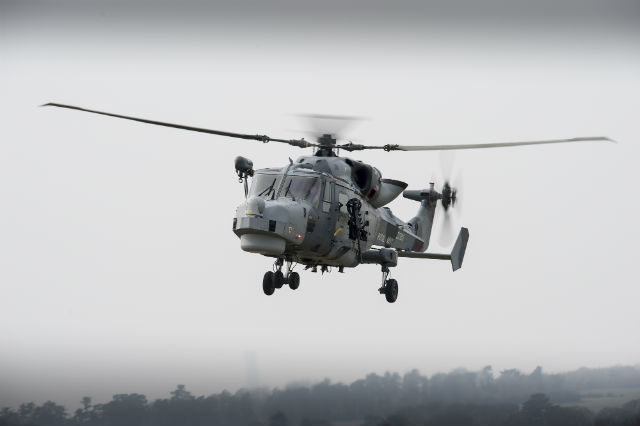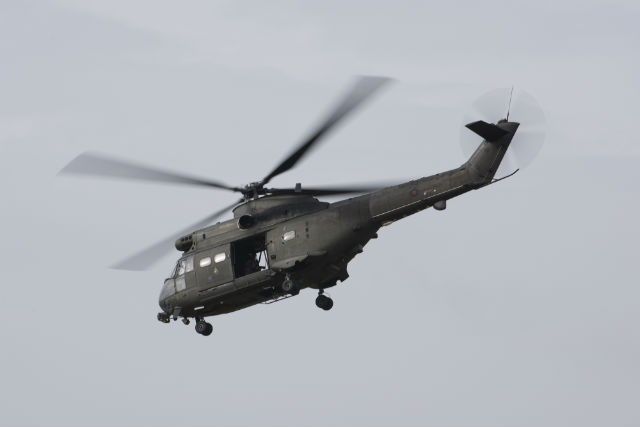Politicians, particularly those eyeing a rapidly approaching general election, are prone to making the sort of grandiose statements that are more concerned with earning political capital than delivering an accurate picture of reality.
With elections in the UK a little under eight weeks away, defence minister Philip Dunne – speaking at an event at the Royal Air Force's Benson base in Oxfordshire on 12 March – delivered a verdict on the nation’s defence helicopter fleet that felt somewhat incomplete.
Having spent some £6 billion ($8.9 billion) over the last four years on upgrading four of the UK's five main types to “bring them into the 21st century”, he said, the UK now possesses “world-class helicopter fleets”.
Dunne isn’t alone in holding that view. Senior Ministry of Defence official Pete Worrall, chief of materiel (joint enablers), speaking at the same event, described the UK’s rotorcraft component as “one of the most capable and technologically advanced fleets in the world”.
However, scanning the five types on show at Benson, there was a sense of only partial truths being told, not least because the upgrade programme is only halfway complete.
Of those five helicopters, two or perhaps three are genuinely world class, but there are question marks over the others.

Crown Copyright
On the positive side of the ledger, the UK now possesses one of the largest fleets of Boeing CH-47 Chinook heavy-lift rotorcraft outside of the USA.
Enhancement work on the RAF’s 46 older Chinook HC2 and HC3 variants under the Project Julius initiative, which adds new avionics and engines to raise them to the enhanced HC4 and HC5 standards, has progressed smoothly. With little over a year of the programme left to run, Boeing says it has delivered 32 of 38 HC4s, and upgrade work on the eight HC3s has begun.
In addition, new-build Chinook HC6 models have been arriving, with six of the 14 ordered tandem-rotor helicopters so far delivered to the service. Initial operating capability (IOC) was declared for the variant in January 2015, based on three operational aircraft. The remaining eight are to be handed over by October, with the final airframe now on Boeing’s Ridley Park, Pennsylvania production line.
AgustaWestland’s AW159 Wildcat programme, with separate variants operated by both the Army Air Corps and the Royal Navy, is also broadly considered a success.
IOC for the navy’s HMA1 fleet was declared in January, following on from the same milestone being attained by the army’s AH1 model in August 2014.
To date, 27 of the 34 AH1s on order have been delivered, alongside 12 of an eventual 28 HMA1s. Phased retirement of the older naval and army Lynx variants is under way, with out-of-service dates of 2017 and 2018, respectively.

Crown Copyright
For the AW101 Merlins, it is a mixed picture, however. Enhancement of the RN’s fleet of HM1 anti-submarine warfare fleet to the new HM2 standard under the Merlin Capability Sustainment Programme is almost complete, with just 10 of a total 28 airframes still to undergo conversion at AgustaWestland’s Yeovil facility in Somerset. The sole outstanding question surrounding the navy’s Merlin inventory, however, is the identity of the supplier of new airborne surveillance and control (ASaC) equipment under the UK’s Crowsnest requirement.
Thales and Lockheed Martin are both vying for the £500 million contract and selection of a preferred bidder is anticipated by the MoD in the second quarter. The service needs to be able to field the system by 2018, to coincide with the retirement of the its Westland Sea King 7s.
Air Vice Marshal Julian Young, director, helicopters at the UK's Defence Equipment & Support procurement body, says the timeline for Crowsnest “will be tight”, but that he is confident “we will deliver that on time and on budget”.
Young also maintains that the perennial bugbear of the Merlin – namely embarrassingly poor reliability and availability – has been addressed. “My understanding is that there has been some quite marked improvement in availability and reliability,” he says, noting that “an awful lot of the challenges are behind us”.

Crown Copyright
The other part of the Merlin question is the conversion of 25 former RAF HC3/3A troop transport variants to the HC4 level for use by the navy’s Commando Helicopter Force. Again, AgustaWestland is performing the upgrade in Yeovil, with the first airframes already inaugurated into the facility.
It will deliver an initial seven examples to an interim standard, with the aircraft gaining only folding rotor blades and a folding tail to enable ship-borne operations, with later models to also gain the same all-glass cockpit as the HM2 variant.
Simon Jones, vice-president of UK government business at AgustaWestland, describes the work as “fairly straightforward” and “well-rehearsed”.
“I’m not anticipating any major issues at all because both elements of the upgrade [the folding blades and tail] have been done on previous programmes. The first seven will be done quite quickly,” he says.
The enhancement work is worth £478 million to AgustaWestland, a figure which Jones describes as “perfectly adequate for what we are seeking to do with the aircraft”.
Meanwhile, just one of an eventual fleet of 24 Airbus Helicopters Puma HC2 transports remains to be upgraded. Crews are enthusiastic about the capabilities the new engines and avionics have delivered, and a deployment of three aircraft to Afghanistan is a sign of confidence in the new platform – particularly in hot and high conditions.

Crown Copyright
That said, the Puma remains something of an oddity among the rest of the UK’s inventory, with its vintage appearance alone making it conspicuous against its newer counterparts. The majority of the fleet were delivered in the early 1970s, according to Flightglobal’s Ascend Fleets database, and the MoD sees the type as remaining in service until 2025, with the potential to extend the retirement date even further.
No replacement is currently planned, but there seems little concern at present, despite the notoriously long length of procurement programmes. “That date is 10 years away,” says Young. “There will be a plan, an assessment whether we need that capability in the UK armed forces.”
The final piece of the puzzle will become apparent next year, when the government of the day will decide on a preferred bidder for the replacement or upgrade of the British Army's Boeing AH-64D-based Apache AH1 fleet. But with AgustaWestland already issuing thinly veiled warnings about the future of its Yeovil plant if work does not come its way, it will be anything but a simple decision.
However, that is a decision to be taken after the general election, so that element of the UK's “world-class fleet” will have to wait for the next wave of politicians to argue over.
Source: FlightGlobal.com























